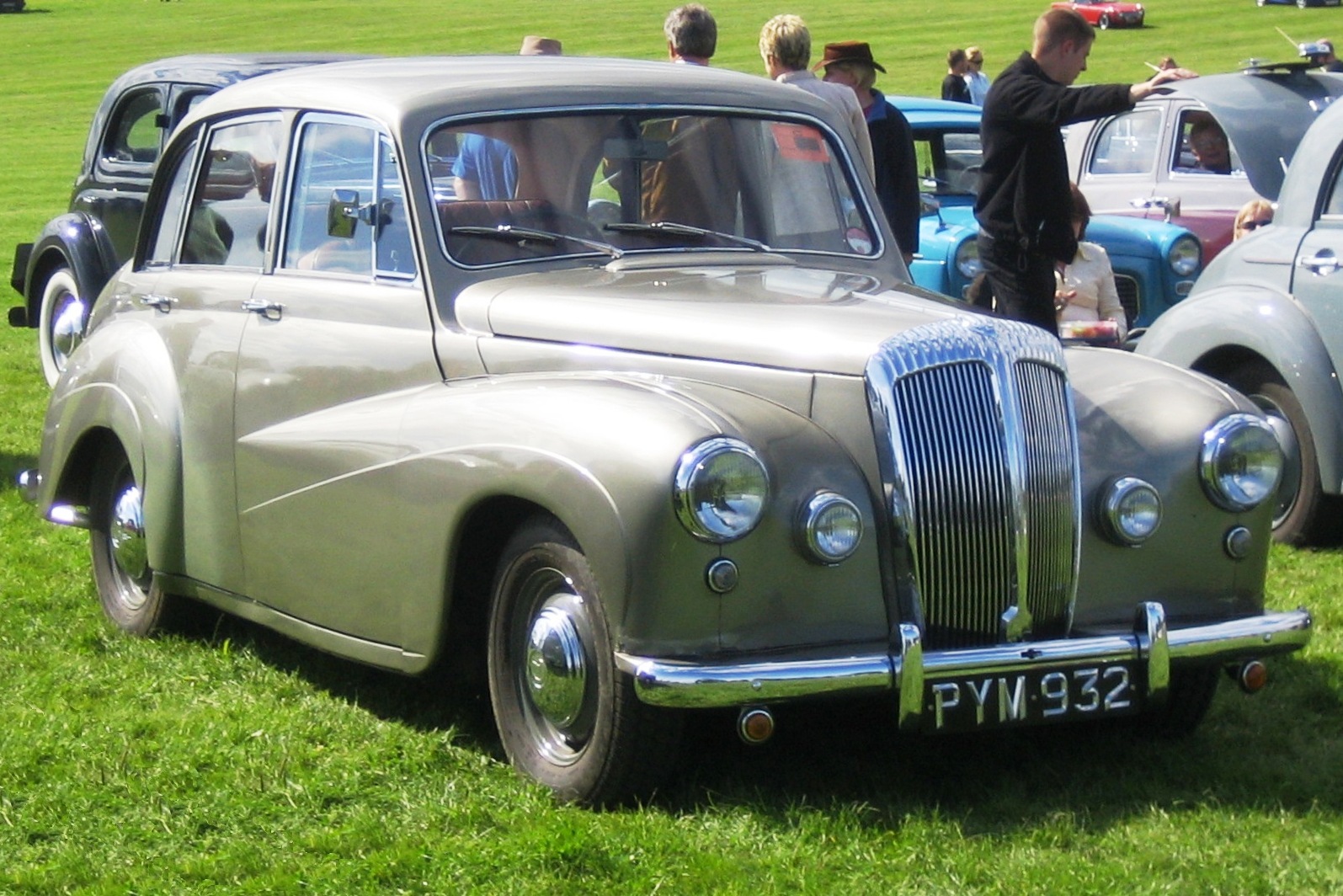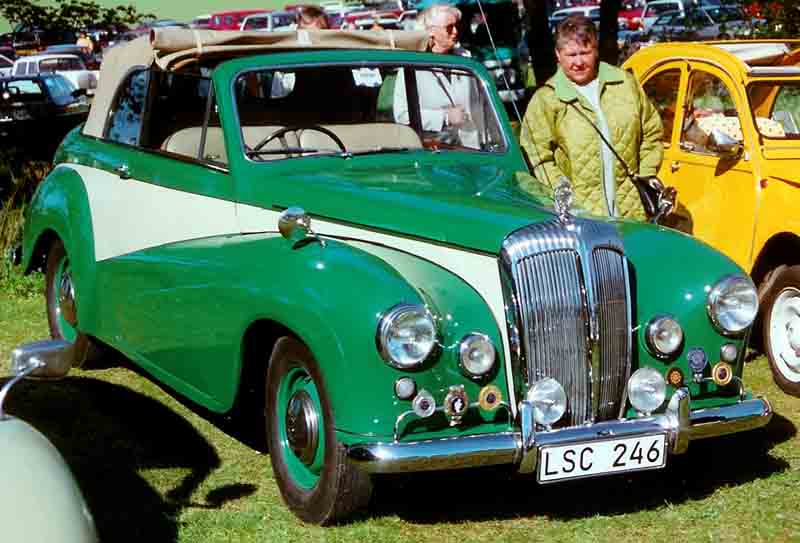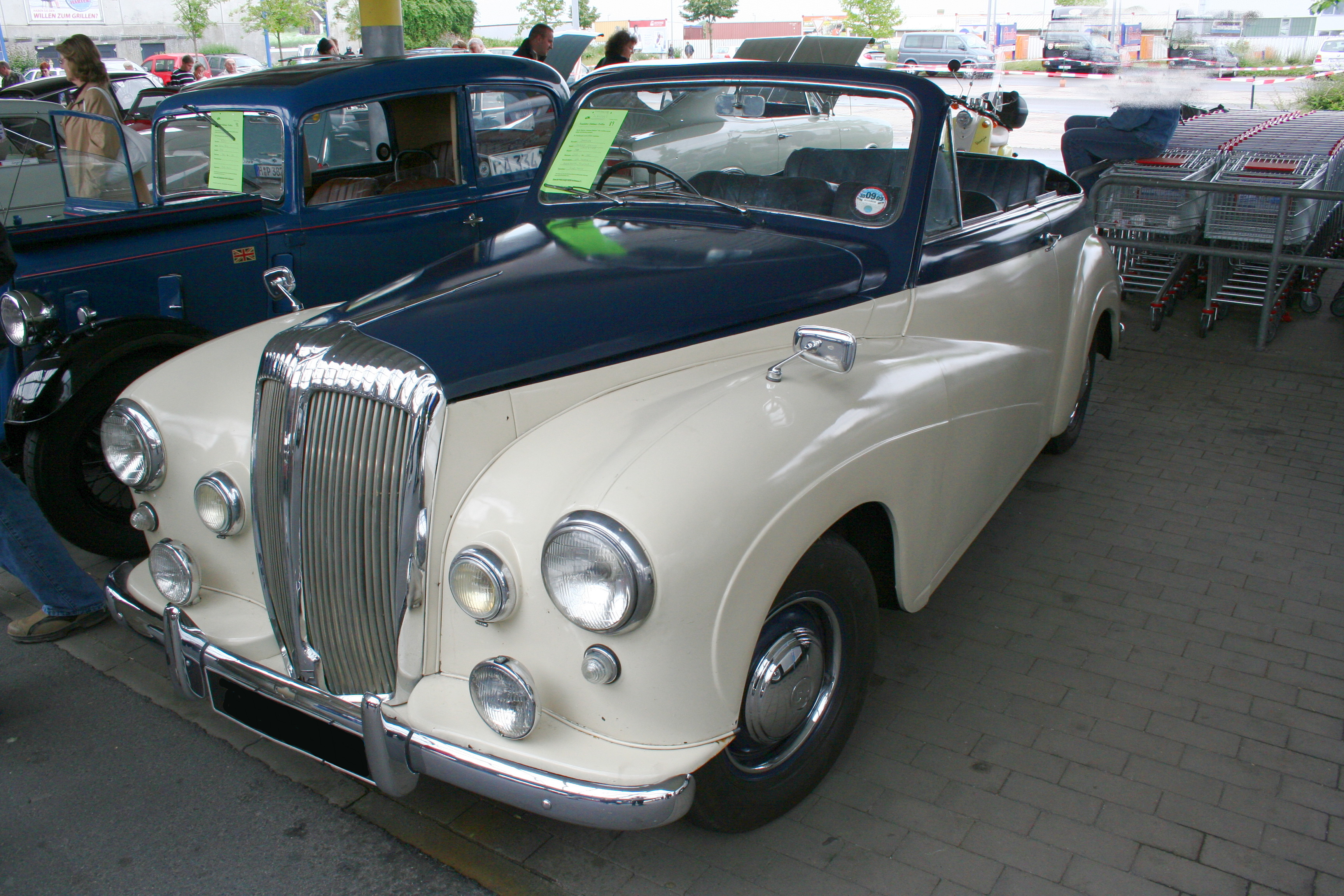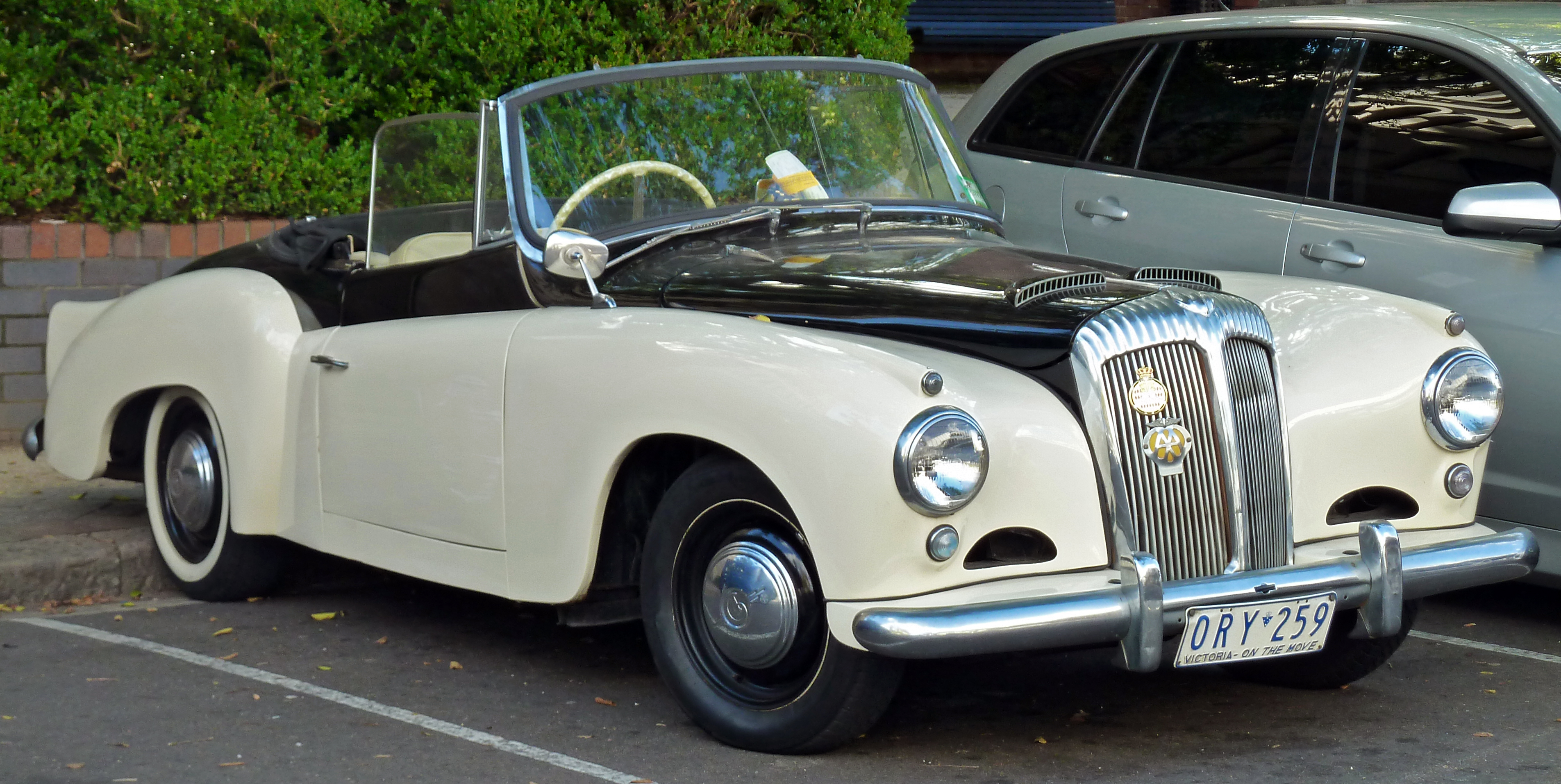DJ Range
Including Century & Leda
Marque Registrar –
Campbell Middleton (02) 4758 7125 &
Richard Thwaites – (02) 6273 3471
History
The Daimler Conquest DJ250 is an automobile which was produced by The Daimler Company Limited in the United Kingdom from 1953 to 1958.
The conquest was offered in the following models:
Daimler Conquest DJ250 & DJ251 saloon (1953–1956),
Daimler Conquest DJ254 roadster (1953–1955),
Daimler Conquest Century DJ256 & DJ260 saloon (1954–1958),
Daimler Conquest and Conquest Century DJ252 & DJ253 drophead coupé (1954–1955),
Daimler DJ255 drophead coupé (1955–1957)
Engine
The standard 1953 cast iron, single Zenith carb, 6.6:1 compression, 2,433 cc (2.433 L; 148.5 cu in) 75 bhp (56 kW) Conquest motor was essentially a six-cylinder version of the Leda four. Bore was 76.2 mm (3.00 in) and stroke was 88.9 mm (3.50 in). The 1954 Conquest Century model had a new alloy head with big valves, higher compression, high lift cam, and twin SU carburettors.
Origins
The body was a very little modified version of that used on the earlier Lanchester Fourteen. The whole car appeared to have been developed within four months after Bernard Docker, then MD of BSA, took on the additional responsibility of MD of Daimler in January 1953.
Presented as a new car, the 75 hp (1953–1956) Daimler Conquest saloon chassis and running gear had originated in the 1950 Lanchester Fourteen or Leda. Lanchester was a sister subsidiary of Daimler. The Conquest’s appearance was identical to the Lanchester apart from the grille. The Leda, when known as the Fourteen had been coachbuilt of steel on a timber frame but the Leda’s body like the Conquest’s was all steel.
The usual Daimler large cruciform chassis had a double wishbone front suspension, with laminated torsion bars, telescopic dampers and an anti-roll bar, while the rear suspension used leaf springs with telescopic dampers.
Automatic chassis lubrication to 21 points, using a pump controlled by exhaust heat, was a Conquest model feature.
Cam and peg steering was used, and Girling hydro-mechanical brakes. (Hydro – mechanical = hydraulic front, mechanical rear brakes.) The cars had an 2,642 mm (104 in) wheelbase.
In January 1955 it was announced that all new Conquests had four inches more leg-space for rear-seat passengers. In addition doors now opened wider and there were “further interior embellishments”.
Performance
The Conquest’s engine produced 75 hp (56 kW) at 4000 rpm, and 124 lb·ft (168 N·m) of torque at 2000 rpm. In Century form the dry liner, pushrod engine with its balanced crank and large water jacket, delivered 100 hp (75 kW) at 4000 rpm, and 130 lb·ft (176 N·m) of torque at 2400 rpm. A Daimler four-speed preselector gearbox with “fluid flywheel” was used.
The Saloon had steel bodies weighing 1,397 kg (3,080 lb) (Conquest: 81 mph (130 km/h), 0-60 mph: 20.4 seconds. Conquest Century: 90 mph (140 km/h)).
The open two-seater Roadster had an aluminium body, except for the bonnet, and aluminium castings were used instead of a traditional timber frame. The Roadster used (pioneered) the Century form of the Conquest engine though when it was first announced in the Roadster it was said to produce just 90 bhp. (100 mph, 0-60 mph: 14.5 seconds, 25.5 cwt (1300 kg).
The 4-seater drophead coupé had a powered roof folding mechanism and shared few body parts with the Roadster. (87 mph (140 km/h)), 0-60 mph: 16.3 seconds).
The New Drophead had steel to the B-pillars, and alloy from there back, apart from steel inner rear guards. (89 mph (143 km/h)), 0-60 mph: 19.7 seconds)
The lighter Roadster was slightly taller geared; while the heavier New Drophead also was slightly lower geared. Other differences to the Conquest saloon include 1⁄2-inch-wider (13 mm) brakes, and steering that was 2½ turns lock-to-lock instead of 3¼.
A saloon tested by The Motor magazine in 1953 had a top speed of 81.6 mph (131.3 km/h) and could accelerate from 0-60 mph (97 km/h) in 24.3 seconds. A fuel consumption of 20.3 miles per imperial gallon (13.9 L/100 km; 16.9 mpg-US) was recorded. The test car cost £1511 including taxes.
Production History
The Conquest saloon was released to the public in 1953 as a replacement for the Daimler Consort, but was shorter and lighter, with better performance. The Daimler Conquest was meant to be an affordable Daimler, priced at 1066 pounds. (That price may well be linked to the name “Conquest”.) It was pedigree with pace, at a reasonable price. They still had luxurious, well-appointed traditional wood-grain and leather interiors. Actual construction was by another BSA subsidiary, ‘Carbodies’.
The open 2-seater Conquest Roadster first appeared at the Motor Show in 1953 with the tuned engine later known as the Century engine. The Roadster was not available to the public till 1954.
The Daimler Conquest Century, released in 1954 was the best seller of the range with 4818 of them produced. A hundred horsepower and, presumably downhill, a hundred miles an hour, hence the Century.
The Conquest Roadster was dropped from production in 1955. The dropheads had outsold them by over 3:1. Then a new drophead 4-seater and a drophead coupé version of the 2-seater Roadster were introduced at the 1955 Motor Show. This Mark II Conquest Roadster drophead coupé had a sideways-facing single rear seat, making the car a 2- or 3-seater and with wind-up side windows in place of the clip-on side-curtains of the continuing Mark II open 2-seater Conquest Roadster.
Two of the roadsters, at least, were coach-built as fixed head coupés. However at this time many very small businesses indeed offered low-cost glass-fibre-reinforced removable tops for all brands of open sports-cars. There is one fibreglass new drophead, and one fibreglass fixed head coupé (with a Hillman Minx Californian three piece rear window!!) One-offs seem to have been mostly done on Roadster allocated chassis, so there may have been even fewer roadsters built than officially indicated.
In October 1956 Daimler Conquest Century buyers were offered the choice of an automatic transmission or the traditional preselector system. Time was changing gear. Preselector gearboxes faded away as modern automatic transmissions took their place. Currency restrictions had meant that until Borg-Warner built a British plant automatic transmissions were only available on export cars.






